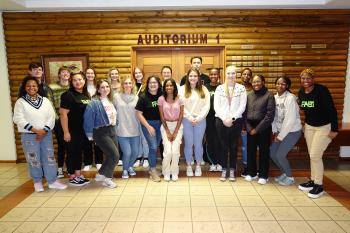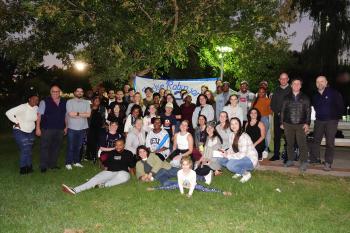Stephen Taerum, a PhD student from FABI at the University of Pretoria in South Africa, visited CERC from May 26 to December 31, 2010. During his stay, Stephen collected bark beetles and their symbiotic mites and microbes from conifers in Yunnan, Qinghai, and Guangdong provinces. In addition, Stephen conducted lab work (i.e., culturing, photography, and molecular work) at CERC using the centre's state-of-the-art equipment. Stephen also attended the China Forest Protection Conference in Shanghai, and the Fifth China Eucalyptus Forum and Industry Exhibition in Changsha, Hunan.
New Publications
Marais I, Buitendag C, Duong TA, Crampton BG, Theron J, Kidanemarium D, Berger DK. (2024) Double-stranded RNA uptake for the control of the maize pathogen Cercospora zeina. Plant Pathology Online first:1-11.
10.1111/ppa.13909
van Heerden A, Pham NQ, Wingfield BD, Wingfield MJ, Muro Abad JI, Durán A, Wilken PM. (2024) LAMP assay to detect Elsinoë necatrix; an important Eucalyptus shoot and leaf pathogen. Plant Disease
10.1094/PDIS-01-24-0086-RE
Silva GA, Oliveira MES, Rêgo GMS, Wingfield BD, Wingfield MJ, Ferreira MA. (2024) Chrysoporthe brasiliensis sp. nov. pathogenic to Melastomataceae in southeast Brazil. Fungal Biology
10.1016/j.funbio.2024.04.001
Fick A, Swart V, Bombarely A, van den Berg N. (2024) Comparative transcriptional analysis of Persea americana MYB, WRKY and AP2/ERF transcription factors following Phytophthora cinnamomi infection. Molecular Plant Pathology 25(4):e13453.
10.1111/mpp.13453 
Van Lill M, Venter SN, Muema EK, Palmer M., Beukes CW, Chan WY, Steenkamp ET. (2024) SeqCode facilitates naming of South African rhizobia left in limbo. Systematics and Applied Microbiology 47(2-3):126504.
10.1016/j.syapm.2024.126504 















































